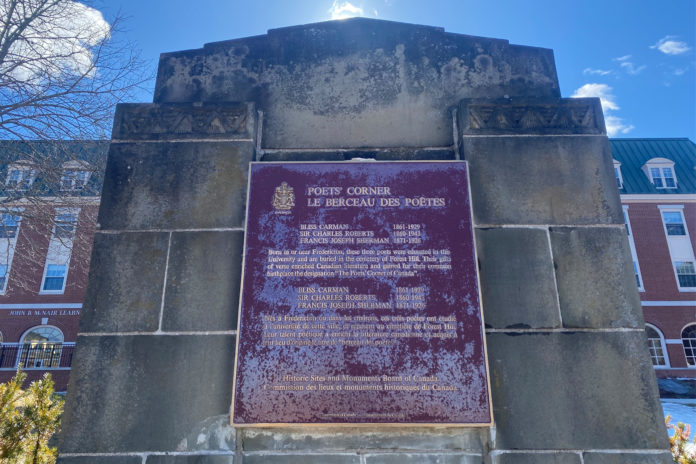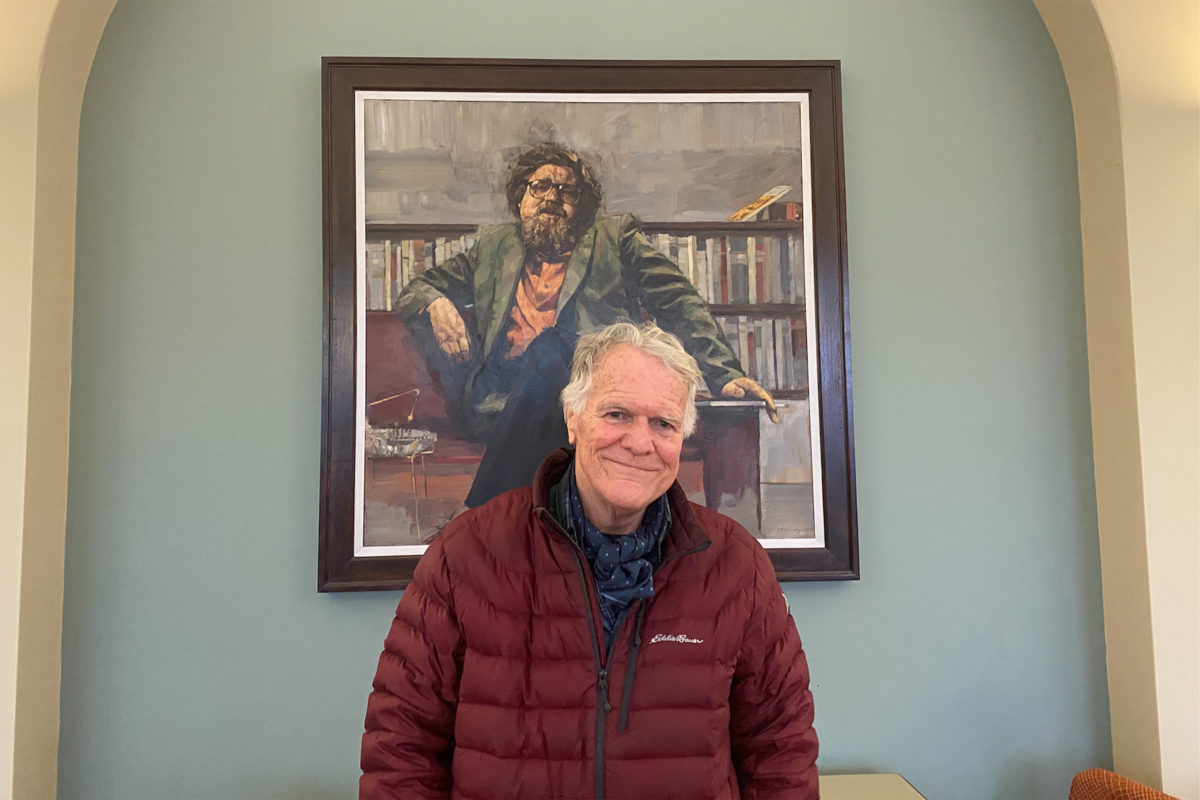
Peter Pacey likes to think about Bliss Carmen and Charles Roberts playing together in Carmen’s backyard. Built before the street came in, the back of the house faces Shore Street — only a short walk from the Wolostoq.
“They went to school within this neighbourhood. They went to church within this neighbourhood.”

Pacey grew up in the same neighbourhood in the 1950s. He is a historian and the son of Desmond Pacey — a Canadian literary critic.
Pacey imagines Bliss and Carmen built a model version of the railroad that would come 10 or 15 years later in their yard, where he takes historical tours in the summer.
Pacey said the boys must have been excited about Canada’s future as a new country.
“That’s one of the things I think that inspired them to become the poets of Confederation, was the sense of Confederation and all the hope for the future,” said Pacey.
Born in 1861, Carmen had just turned six when the country was formed. One year older than Carmen was Roberts, who was born in 1860.
Pacey said this is when Canadian literature begins.
He describes the downtown neighbourhood, where the two boys grew up, as the centre of the nation’s birth of Poets’ Corner. Fredericton earned the nickname in 1947, but Pacey said it went by this title decades before.
Bliss and Roberts are remembered today as two of the most famous poets in Canada. Their portraits hang in the Harriet Irving Library on the University of New Brunswick’s Fredericton campus.
“That’d be Carmen in his glory,” said Pacey, pointing at a painting of Carmen holding one of his own books.
Roberts’ portrait is to Carmen’s left, painted when he was older and is in darker tones. He wears a grey overcoat and fedora and has a clean shave.
Roberts wrote propaganda for England during World War One. Pacey remembers his writing on a fire that swept across Saint John, N.B. in 1877.
“Roberts tells the story of paddling all the way down river through the night with the sky lit up by the huge conflagration in Saint John,” he said.
He said in addition to being a poet, he also wrote anthropomorphic stories, where he would take on the perspective of an animal.
One was about a bull moose growing from infancy to old age.
“All these kinds of things just really connected to me and my imagination, but also to any child in a sort of sense of the beauty and grandeur of nature.”
Pacey called Roberts “hugely influential” in many ways. He lived the longest of the Confederation poets, living to 1943 while Carmen died in 1929.
His sister, Jane Elizabeth Roberts, who married and became a McDonald, was also a poet.
McDonald is often lost in the shadow of her more famous older brother. A plaque on the side of her house on George Street, Little Glencore, neglects to mention her name, identifying her solely as “the sister of Sir Charles G. D. Roberts.”
Pacey lived in Little Glencore for a time and thought the plaque was insulting.
“She was a poet in her own right,” said Pacey. “I’m not putting [the plaque] up — so I kept it in the front porch.”
Little Glencore inspired McDonald’s poem “My House.”
When Pacey heard the poem and realized it was about the house he now owned, he decided to paint it brown with green shutters in tribute to the house’s original appearance.
A few houses over was Aunt Jane, whose nom de plume was Juliana Horatia Ewing. She wrote children’s books and was the editor of a children’s magazine in the middle to late nineteenth century.
She was a mentor and inspiration to Roberts’ kids when growing up and Elizabeth Roberts McDonald wrote a poem thanking her.
“All of these things kind of play together in my mind to create this hotbed or this greenhouse effect for these poets,” said Pacey.
Francis Joseph Sherman is the youngest of the three poets of the Confederation. Almost ten years after Roberts and Carmen, he was born in 1871.
Carmen and Bliss took Sherman under their wing until he was in his mid 20s. They reviewed his poetry and sang his praises.
Most of his poetry was written as a teenager when he was in love with May Whelpey.
The Whelpeys were popular in Fredericton society groups, with her dance cards always filled. Ironically, because of infantile paralysis, one leg was shorter than the other and she was unable to dance.
Luckily, men like Sherman were happy just sitting down and talking with her.
In his book Fredericton Flashbacks, Ted Jones describes a scene between the happy couple.
“It was a familiar sight in Fredericton to see May and Frank in her carriage, riding into the countryside for picnics or walking across the Green, carrying cushions and paddles to the river’s edge, his birch bark canoe waiting to take them over to the Nashwaak River,” he wrote.
Whelpey inspired Sherman’s first book of verse, Matins, and five books of poetry to come.
“In those days, most poets were published in small volumes in places like Connecticut and Massachusetts,” said Pacey.
The pair were engaged, but never got married. Family differences intervened and Whelpey would not leave Fredericton. Sherman left the city brokenhearted to work as a banker.
After Whelpey died from tuberculosis in 1906. Sherman never wrote again. He lived out the rest of his life as a successful banker, remarrying someone who didn’t know he was a poet.
When he died in 1921, his ashes were returned to Fredericton to be buried.
Today, May Whelpey and Frank Sherman lay on opposite sides of the old Hillside cemetery.
After his death, Bliss and Roberts insisted on Sherman’s stature among them as a great Canadian poet.
“All three of them loved the river and loved the outdoors and sort of saw themselves as outdoorsmen.”
All three attended the University of New Brunswick, where a plaque dedicated to them stands outside the Harriet Irving Library.
It was erected in 1947 when Desmond Pacey and other UNB professors and students created the Bliss Carmen society. This society became the Fiddlehead group, a popular Fredericton literary magazine still in print today.
Pacey published his own verses in Fiddlehead in his early 20s, but stopped publishing his work soon after.
“I still write poetry, but it’s more what I call occasional verses,” said Pacey. “When I write, I write for different occasions and share them with the people I write them for.”
